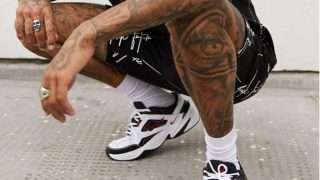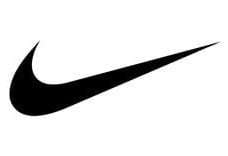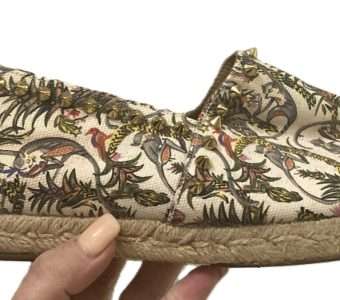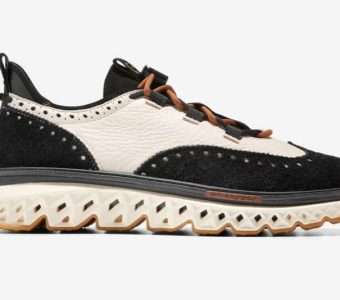I imagine befuddled 25th century anthropologists looking back on our era and naively asking themselves, “How the hell did a sneaker company become the most valuable apparel brand in the world?” (according to Forbes 2022). But, I mean, anyone living in the late 20th or early 21st century knows the simple answer: Nike just gets it.
Nike gets that people don’t merely purchase certain products, they adopt a whole lifestyle around them. They don’t only want to feel connected to their favorite brands, they desperately long to be inspired by them. And absolutely no one does a better job of tapping into the zeitgeist and redefining, motivating and inspiring us than Nike.

Whether igniting a galactic consumer phenomenon through their 1985 release of the original Air Jordans (and inadvertently launching sneakerhead culture along the way), or seeing their products burned in protest for their provocative 2019 “Dream Crazy” campaign featuring outcast NFL quarterback Colin Kaepernick, Nike has perfected the art of disruption.
Their story of course is a combination of strategic savvy, perfect timing and a ruthlessly iconoclastic ethos. Phil Knight and partner Bill Bowerman began their venture Blue Ribbon Sports in 1964 and rode the jogging and running wave of the 1970’s to some initial success. But it was Bowerman’s innovation of the “waffle sole,” based on the pattern of his wife’s waffle iron, that instilled the company’s formative spirit of continual innovation. And soon NIke was born.
Taking its name from the Greek goddess of victory, it’s pronounced “nai-kee,” not “nike,” even though the Greeks themselves pronounce the name “nee-kay.” And can we just take a moment here to appreciate the utterly mythical manner in which Nike remapped and redefined the spirit of sports across the entire arena of human endeavor?

Starting with their celebrated 1988 “Just Do It” slogan and campaign, Nike managed to distil the essence of sports into three simple words that ring with conviction, regardless of your age, place, gender or orientation. It’s the radical idea that sports–meaning effort, discipline, sacrifice, teamwork, self-improvement, triumph and defeat–can serve as the perfect metaphor for life. And, well, that sh*t sells! Shakespeare himself would be proud.
But it’s not really about the shoes (despite the loudest protests of Spike Lee’s Mars Blackman character in his popular 1991 “It’s Gotta Be the Shoes” campaign). It’s not even about their aforementioned spirit of relentless innovation, which has led to not only numerous patented technologies like Air-sole and Flyknit, but also to pioneering the lucrative blue ocean of sports endorsements with such iconic personalities as Michael Jordan, Tiger Woods, Cristiano Ronaldo and Serena Williams.
Above all, Nike make the best bloody ad campaigns in history. Besides the many Jordan classics, you can probably recall Tiger Woods juggling a golf ball and then whacking it off into infinity. Or the Brazilian World Cup football team passing and juggling their way through a busy international airport. Or a fat kid jogging alone along a country road with just the tagline “Find Your Greatness.”
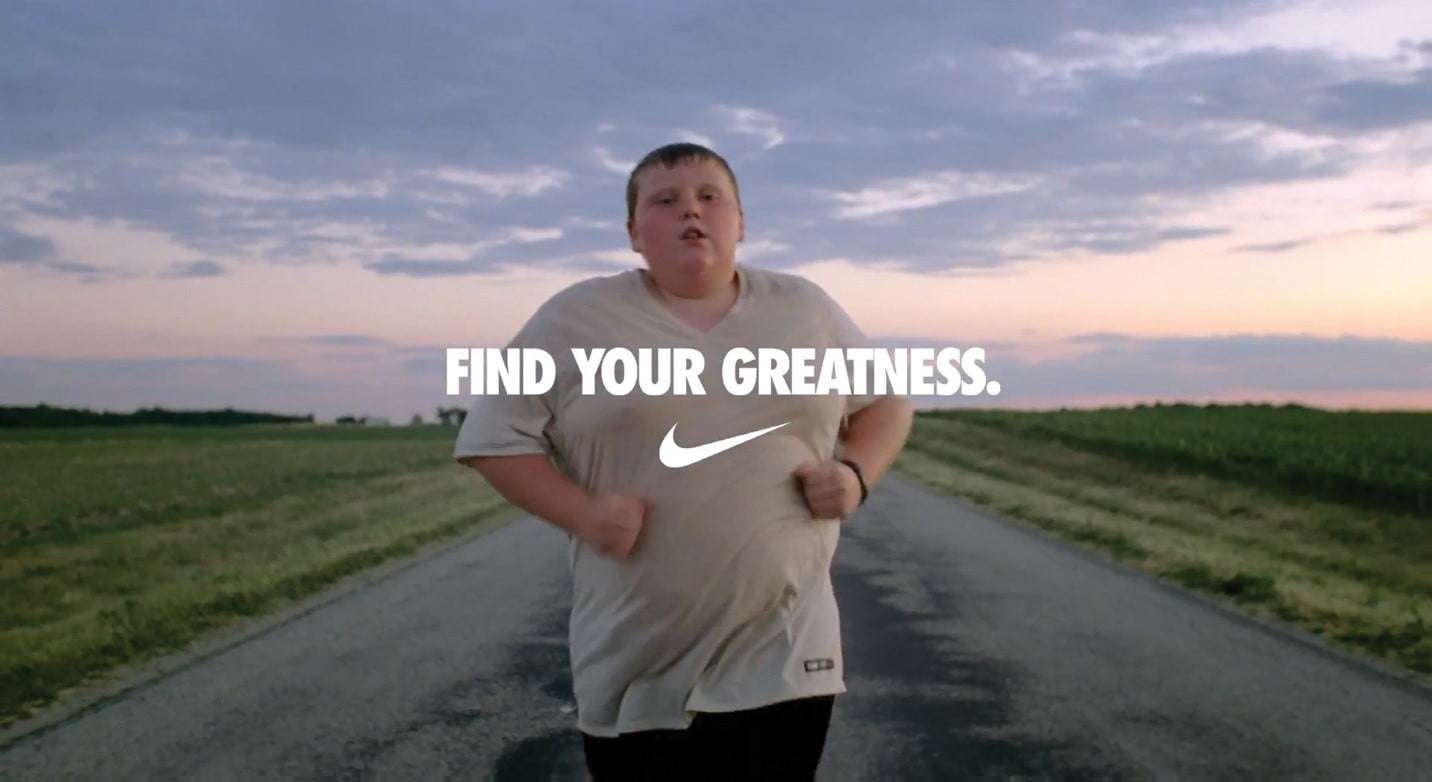
Nike appear to have thoroughly absorbed the championship ethos of the very heroes they champion–courting controversy, despising complacency, risking failure and daring greatness in their desire to utterly crush their competition.
Nothing relates this better than the story of their groundbreaking initial collaboration with Michael Jordan (which has now been made into a movie starring Matt Damon). According to Wikipedia:
- On October 26, 1984, Michael Jordan signed a five-year, US$2.5 million deal with Nike, three times more than any other deal in the National Basketball Association (NBA) at the time. Nike released the Air Jordan sneaker line in April 1985 with the goal of making $3 million in the first three years. Sales greatly exceeded expectations, earning $126 million in one year.
Recall that Nike took the added step of paying all fines levied by the NBA for the new non-regulation Air Jordans, and jiu-jitsued this controversy into further publicity, calling the shoes “Banned” and selling out their initial run of 50,000 pairs, generating over $150 million in sales along the way.
When you court controversy as routinely as Nike, you’re bound to enrage the haters and make a few missteps along the way. And Nike faced serious backlash against their wanton use of sweatshop labor during their ascendancy in the 1990s. But it was a more naive time for many global brands and Nike have since taken measures to verify and improve their overseas labor standards and practices, while now investing in sustainability and making more eco-friendly products
As a shoe manufacturer, Nike is devoted to performance innovation, adding stylish value through its many partnerships and collaborations. But as a marketing force, they are a merciless, emotionally-resonant storytelling juggernaut and the undisputed heavyweight champions of inspirational messaging.
(Mic drop)

